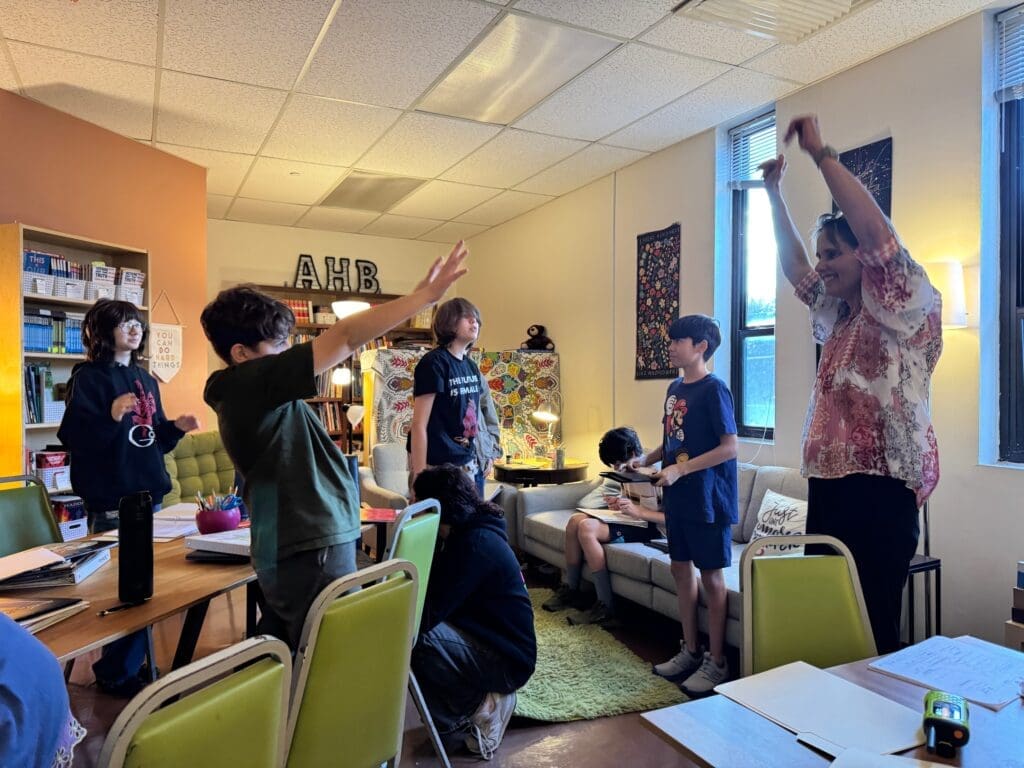Math –
Ms. Andrea’s math group wrapped up our unit on $ & financial literacy by counting & comparing sets of coins, solving coin riddles and story problems, and learning & playing a lot of new games! We also worked on balancing scales, by counting the coins on one end of the scale and building the same amount on the other end using a different combination of coins. Our Beta 1s have become expert coin counters. On Thursday they ROCKED their unit assessment. Way to go, Betas!
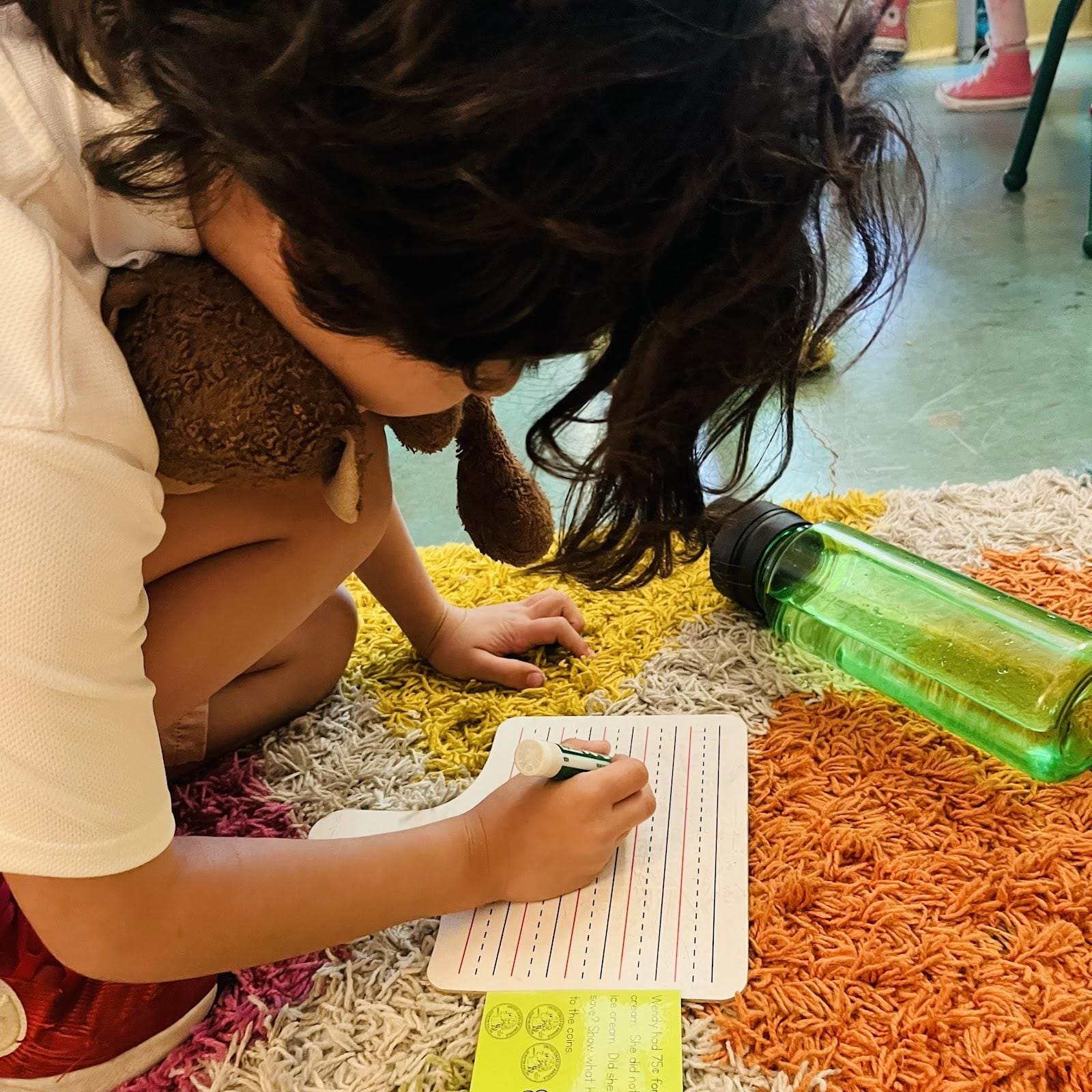
| 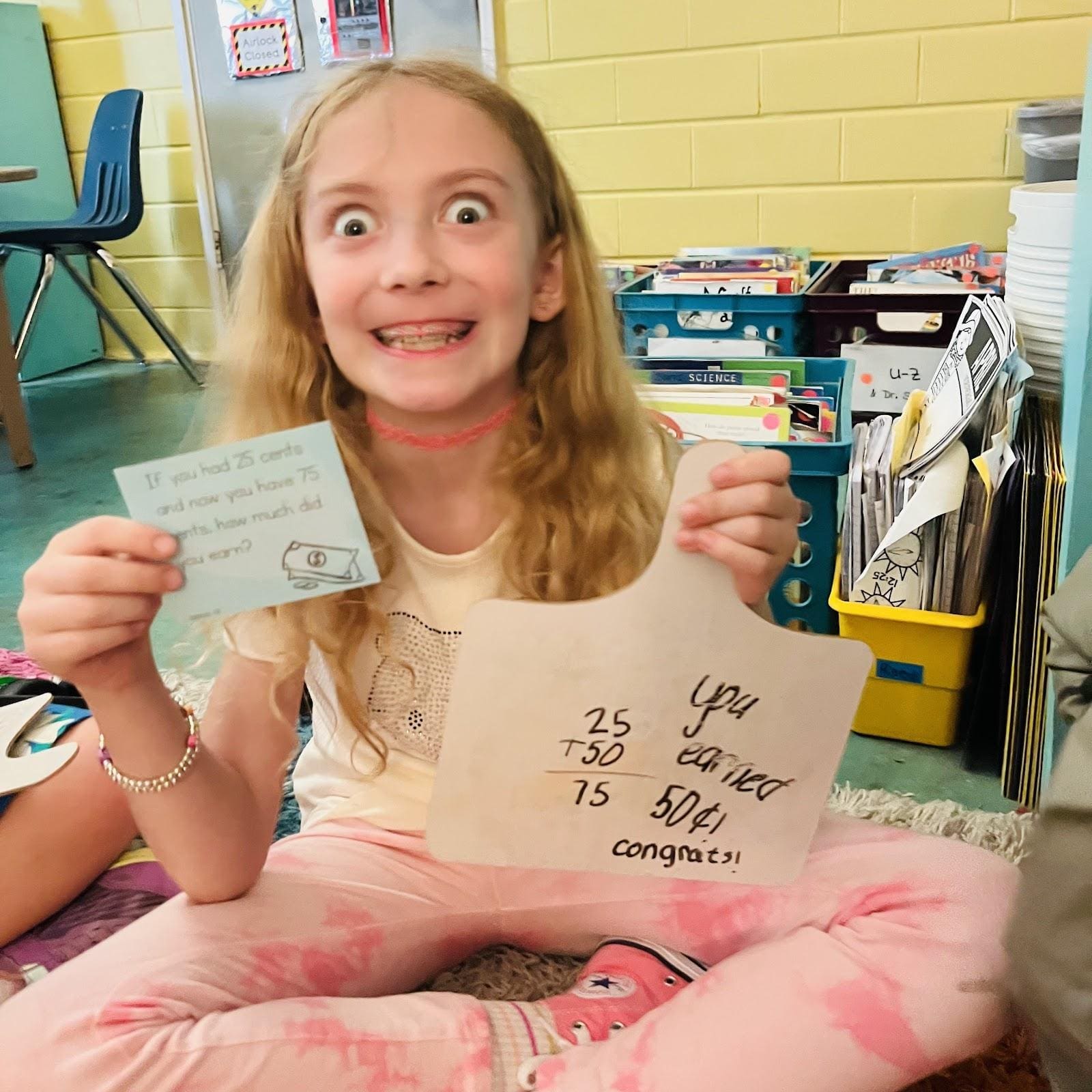
| 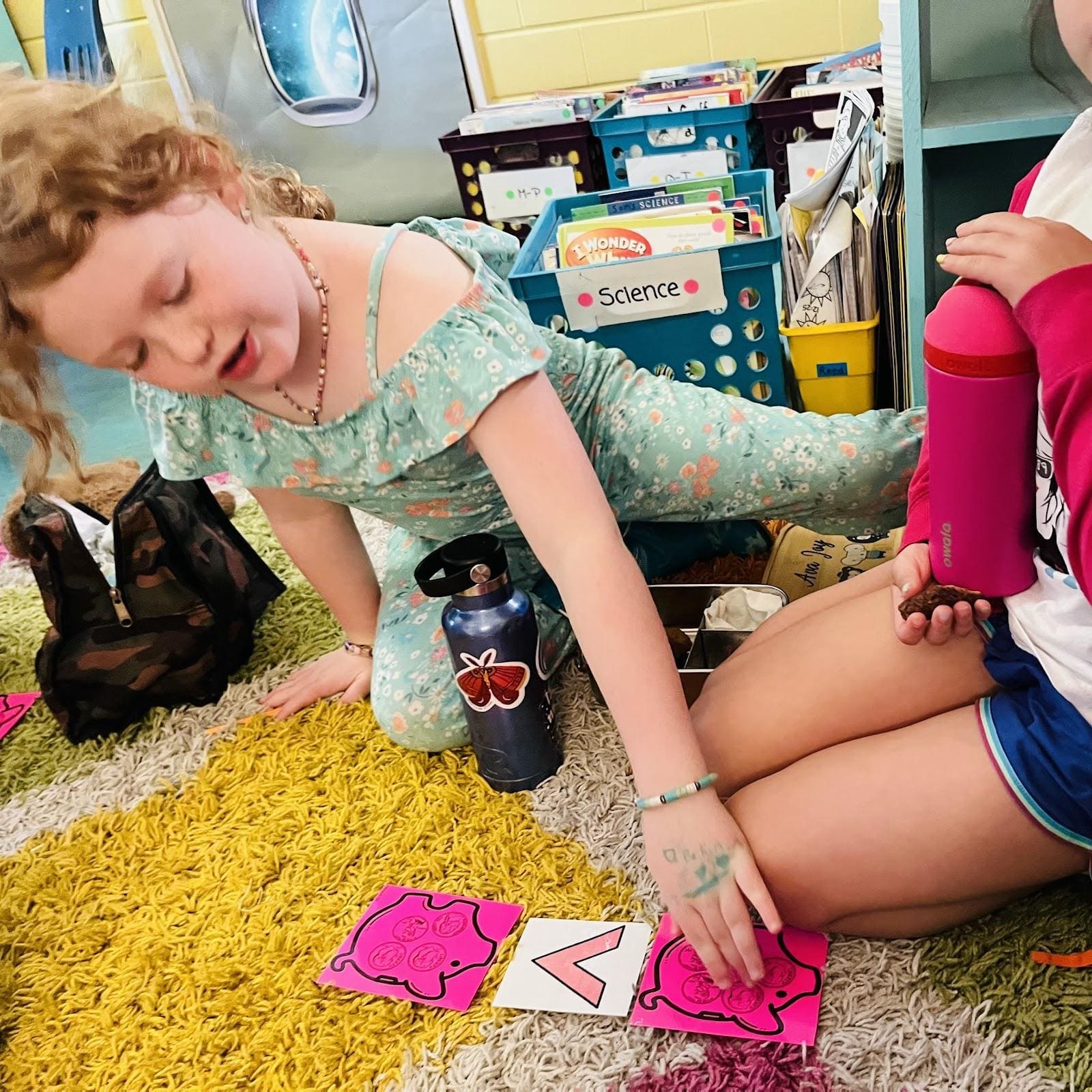
|
|---|
Ms. Kelly’s crew continues to practice mapping fractions greater than one on number lines. This visual strategy is more than just a teaching tool—it’s a powerful way to make fractions come to life. By placing fractions as specific points on a number line, we can turn abstract concepts into something concrete, building a deeper understanding of how fractions relate to whole numbers and the real world.
To reinforce the meaning of numerator and denominator, we played a game using our bodies to show which number goes on top and which goes on the bottom. Grasping the difference between these two parts of a fraction is essential: the numerator tells us how many parts we have, and the denominator tells us how many parts make up a whole. While this can be a tricky concept for young learners, they’re doing a fantastic job rising to the challenge—and having some fun along the way!
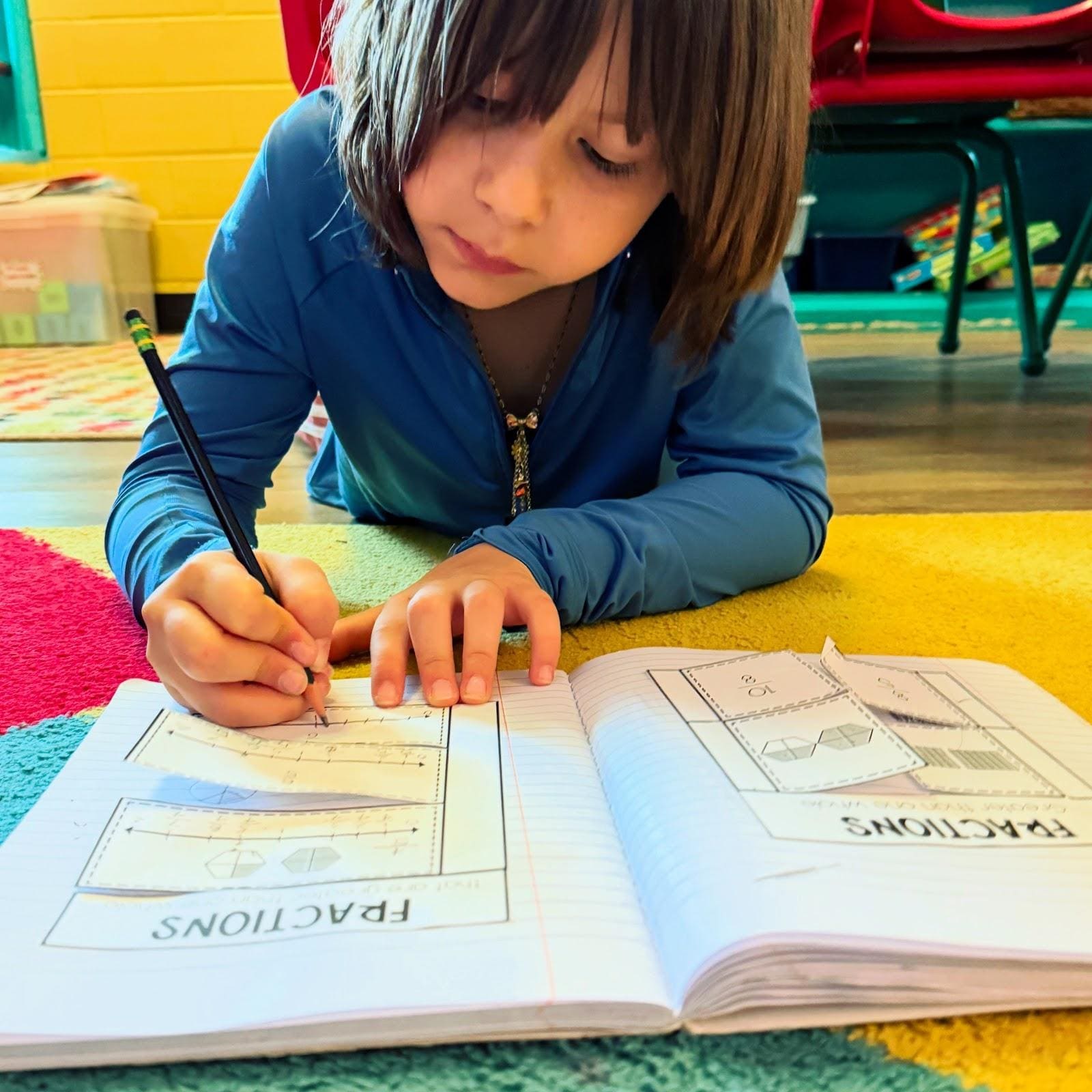
| 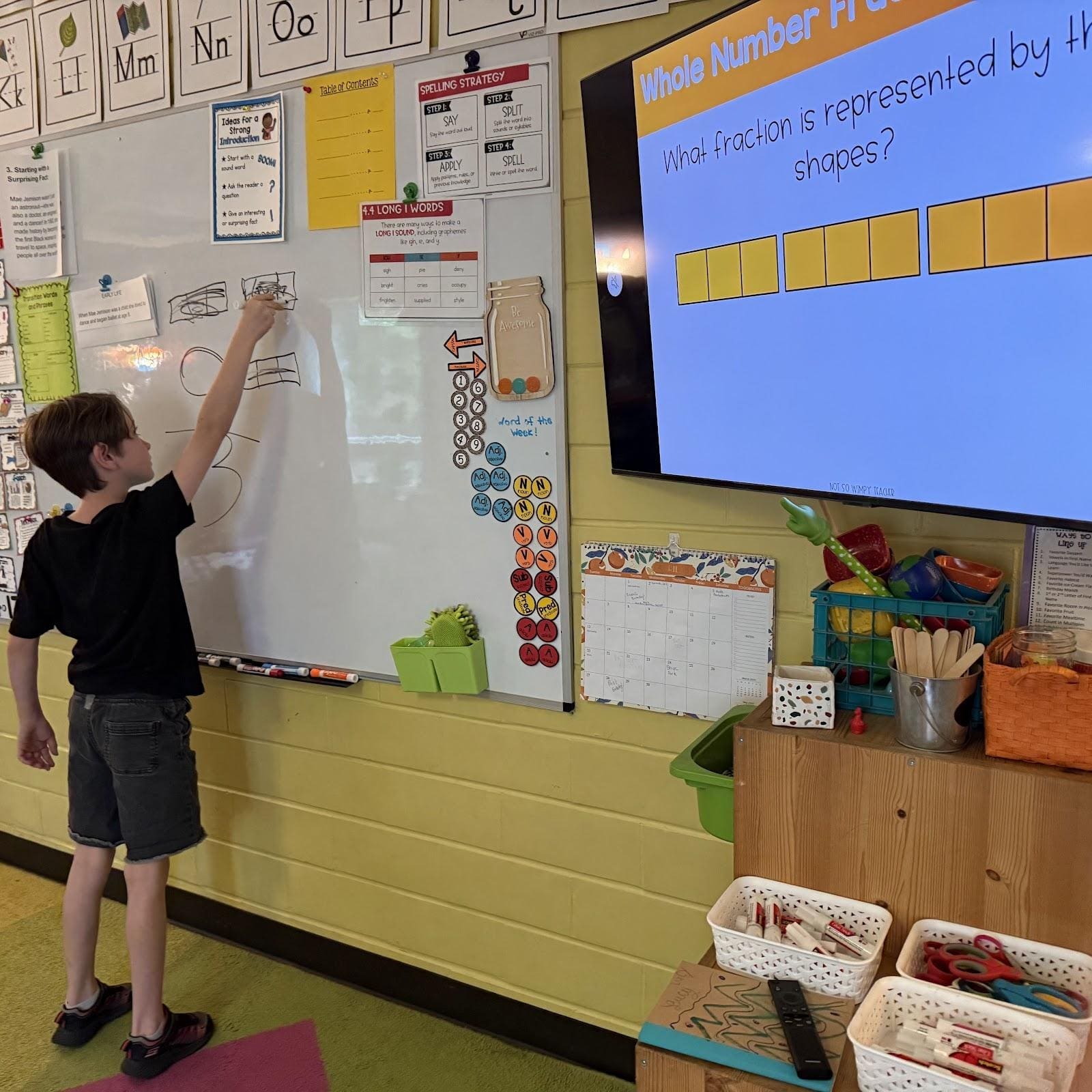
|
|---|
Reading –
Ms. Kelly’s spelling group continued their exploration of consonant-le syllables this week and put their impressive syllabication skills to the test by breaking down some seriously big words! Our latest syllable focus—the consonant-le syllable—always appears at the end of a word.To deepen our understanding, we read both fiction and nonfiction texts featuring words with this syllable type and practiced answering comprehension questions in complete sentences. We ended the week using invisible ink for our dictation- a fan favorite!
Ms. Andrea’s spelling group words this week all feature the long i vowel sound. Beyond silent e, these words might be spelled with an “igh” (sight), “ie” (tie, replied), or simply a y (deny). The long i sound is also present when an open syllable ends in i – as in “item” or “tiger.”
Book Club Update: The Littles group has finished their latest read and is diving into their final book of the year: The Littles Go Exploring! The Ranger group will begin the hilarious mystery Bunnicula on Monday, and the Fudge group is turning the final pages of their novel and preparing to wrap up next week.
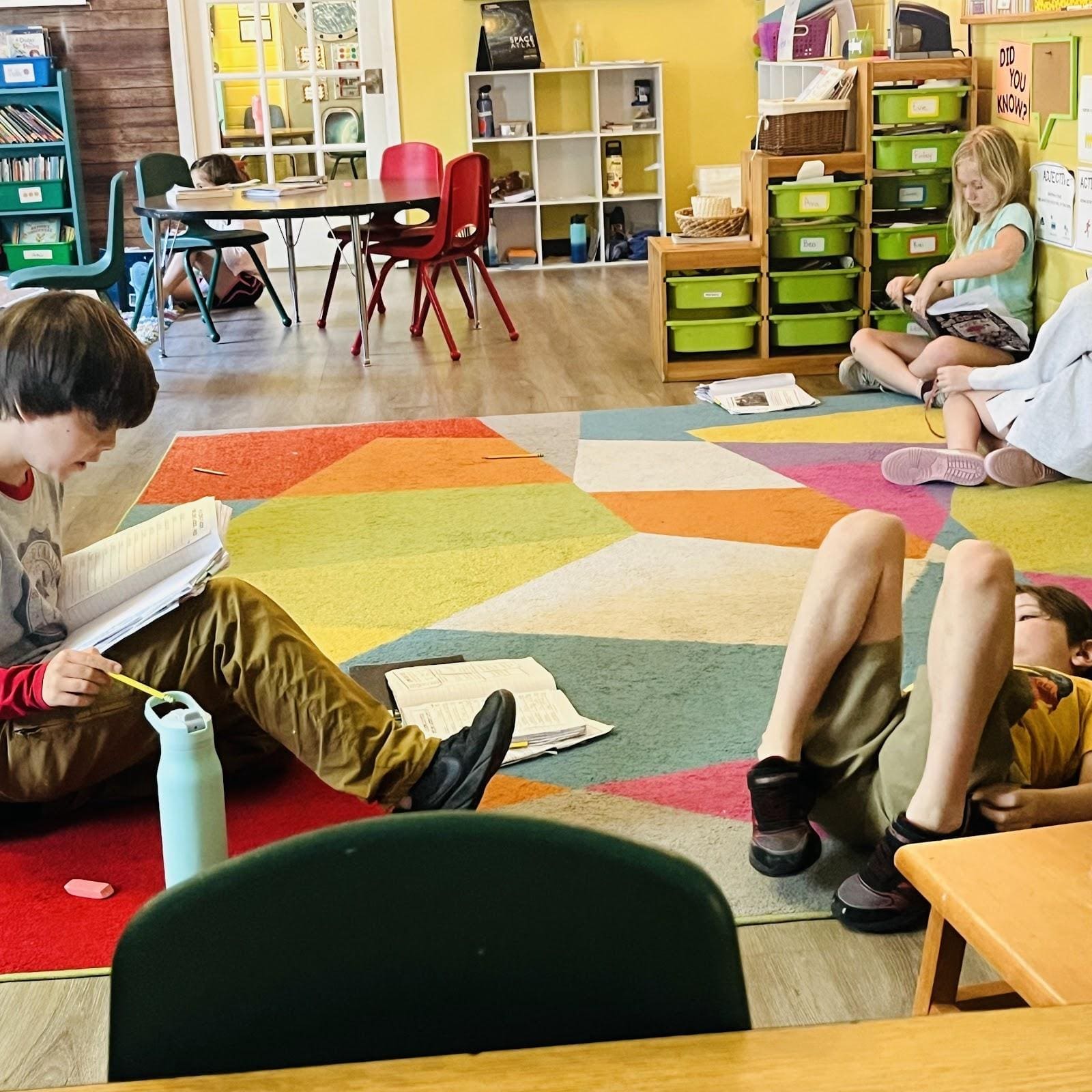
|
|
|---|
Writing –
Our Beta writers dove headfirst into full-on rough draft mode this week! After highlighting key facts from their research articles, jotting down the most interesting pieces of information, crafting thoughtful headings, and experimenting with different ways to hook a reader with a strong introduction, we’ve now moved on to shaping all those loose facts into well-organized paragraphs.
Throughout the week, we focused on transforming our notes into cohesive writing—putting facts under the right headings and building strong, clear paragraphs. We also introduced the power of transition words—those helpful little bridges that connect ideas and guide readers smoothly from one thought to the next. We talked about how transitions help organize information, improve clarity, and make writing easier to follow.
It’s a big step (and no easy task even for adults!), but our writers were up for the challenge. We’re so proud of how far they’ve come!

| 
| 
|
|---|
Theme –
Our Beta astronomers took a deep dive into the history of space science this week! We began by learning about early astronomers who once believed everything revolved around the Earth—the geocentric theory supported by Aristotle and Ptolemy. Then we explored the revolutionary ideas of Copernicus and Galileo, who boldly challenged this belief and introduced the heliocentric theory: that the Earth and other planets revolve around the sun.
We also celebrated the groundbreaking achievements of Dorothy Vaughan, Mary Jackson, and Christine Darden—brilliant mathematicians and engineers who shattered racial and gender barriers in the field of aeronautics during the mid-1900s. Through their love of math, resilience, and determination, these incredible women helped drive the U.S. forward during the space race. Then we put our minds to coding! Working in pairs, kiddos plotted paths on grid paper to guide astronauts safely to the moon—while cleverly avoiding obstacles along the way. Using a sequence of simple arrow commands, they coded their routes and challenged themselves to think logically and creatively. And guess what? Mission accomplished!
We wrapped up the week by learning about some truly inspiring astronauts and the remarkable paths they each took to space. We met Mae Jemison, the first Black woman in space; Sally Ride, the first American woman in space; José Hernández, the first first-generation Mexican-American astronaut; Guion Bluford, the first Black man in space; and, of course, Neil Armstrong, the first person to walk on the moon.
Each of their stories is filled with determination, courage, and incredible accomplishments. They remind us that with passion, perseverance, and hard work, the sky isn’t the limit—it’s just the beginning.

| 
|
|---|---|

| 
|
*** Want to see more pictures, videos and more details about each day? Don’t forget to check us out on Instagram! ***
@ Beta_class

